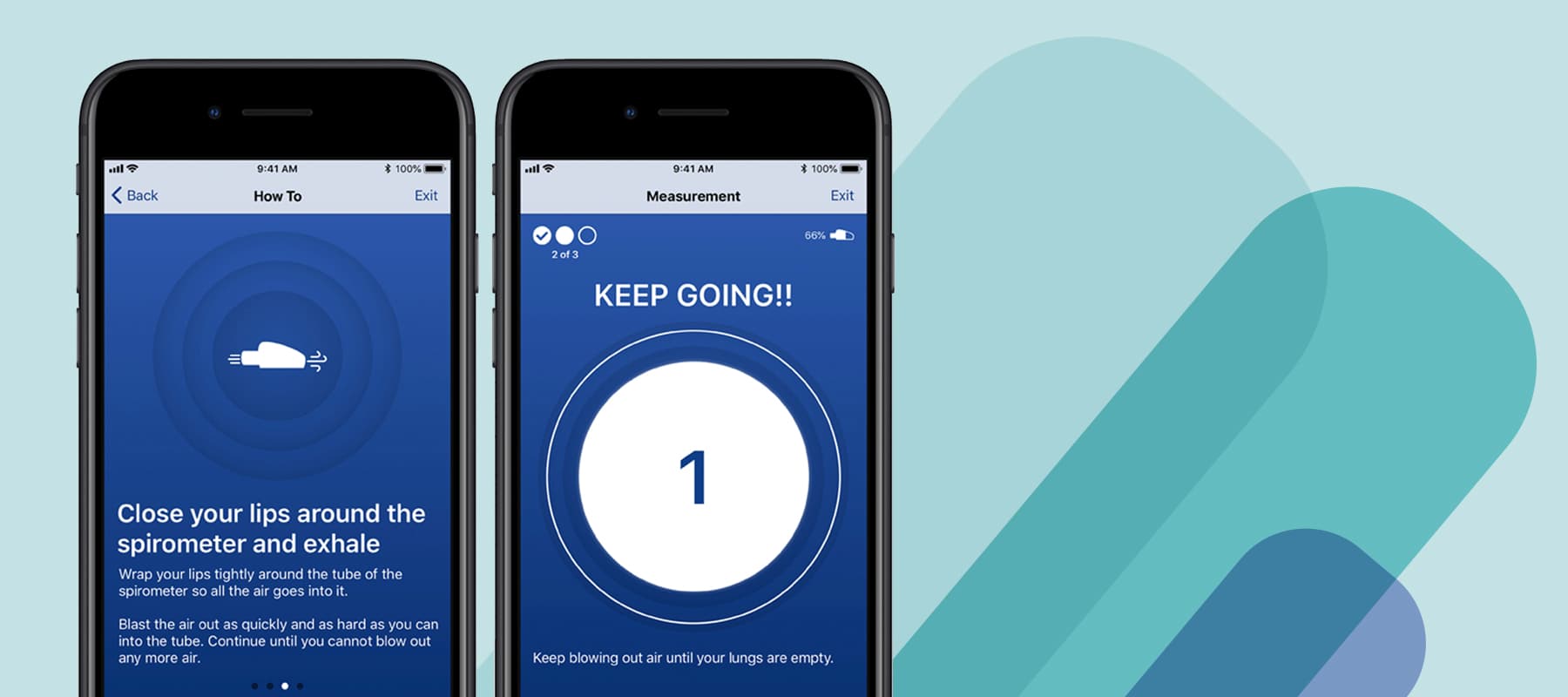
Moving Out of the Clinic with Digital Tools: Mobile Spirometry During COVID-19 & Beyond
An important technology in assessing lung function, spirometry offers crucial data for the diagnosis and monitoring of pulmonary system diseases, as well as the ongoing measurement of treatment efficacy. But trends in the healthcare industry and new challenges introduced by the COVID-19 pandemic are causing professionals in clinical practice and research to reevaluate spirometry’s deployment methods and best practices.
Digital healthcare technology is seeing heightened exploration as more people search for safe and effective ways of providing patients care and conducting successful clinical trials. Digital tools such as wearables, physical activity trackers – and mobile spirometers – can support remote data collection, which offers new opportunities to gather data in settings that are more reflective of patients’ daily lives—a unique benefit that may help improve the patient experience in a variety of situations and encourage greater participation and compliance in clinical trials.
In-Clinic vs. At-Home Spirometry
Mobile spirometry, or at-home spirometry, is one of the many testing methods across the healthcare landscape that can act as a viable alternative to doctor’s office procedures. Moving spirometry out of the clinic holds great potential in the respiratory disease space, where symptoms can be impacted by seasonal and environmental changes. It’s factors like pollen count and air pollution that warrant a more detailed picture of disease fluctuations over time—something that in-clinic spirometry assessments can’t quite achieve.
But even with the dense data that can be acquired through handheld spirometers, mobile devices, and digital tools used in other therapeutic fields, concerns still exist about the quality of data that researchers and healthcare providers receive from patients and the capacity of patients to comply with treatment requirements when professionals aren’t providing supervision. For mobile spirometry, it’s essential to address several aspects of patient-performed measurement that may influence remote data collection, including whether a patient is sitting, standing, or moving when taking the test and what level of effort they will put into performing the test unsupervised.
What Study Results Say
Recent studies have shown that data collected through mobile spirometry is comparable to that of in-clinic spirometry. These studies have examined elements like the relationship between handheld and clinic-based spirometry in asthma patients and the validity of home-based spirometry measurements in severe to very severe chronic obstructive pulmonary disease. One study published in the journal Clinical and Translational Science monitoring FEV1 in asthma patients found high correlation between mobile and clinic measures, tight limits of agreement, and excellent test-retest reliability.
The results of these studies revealed significant advantages to remote data collection for patients, including its ability to add new levels of convenience and keep patients engaged with mobile device alerts and reminders. A well-designed mobile application deployed alongside a handheld spirometer can provide test instruction, audio coaching, and immediate feedback, all of which may empower patients and clinical study participants to take an active, rather than passive, role in their own care. In fact, patient compliance was at a high 85% for once-a-day data contribution in the mobile spirometry pilot study on FEV1 in asthma patients.
The dense data obtained through this method also enable doctors and researchers to take into consideration elements like hours of the day and seasons of the year as they view outcomes. Frequent data collection makes it possible to track disease fluctuation over time to make informed decisions on patient care and available treatments.
Going Remote During COVID-19
Gaining more insight into the utilization and benefits of mobile spirometry was a goal of researchers before COVID-19 quarantine restrictions and continues to be a crucial focus area as the pandemic continues. The American Thoracic Society (ATS) urged healthcare professionals to reduce the risk of infection to vulnerable patients by minimizing clinic visits, and, along with representatives from the Association of Pulmonary, Critical Care, and Sleep Division Directors, has recently labeled home spirometry as “reasonable option” for those who require ongoing pulmonary function surveillance and testing. They suggest that at-home techniques be supported by video and telemedicine coaching and education.
Recommending this approach can help keep more patients safe, especially when a large amount of the population remains unvaccinated but eager to return to a state of normalcy. But it’s important to emphasize in the research community that trials utilizing mobile spirometry tools must be designed thoughtfully with appropriate endpoints and measures that are fit for purpose.
Mobile spirometers should have the ability to measure full flow volume loops and meet ATS and European Thoracic Society (ERS) standards for low airflow measurement, maintaining those standards without daily calibration. Devices should also be able to inform patients whether they’ve performed a test according to ATS or ERS requirements.
And beyond the device itself, mobile data collection procedures must offer technical support that helps patients be as compliant and successful as possible in their efforts to capture data through spirometers and mobile apps. Along with easy ways to contact trial sites, this can look like illustrated instruction manuals and data monitoring to mitigate possible issues.
Deploying More Digital Clinical Measures
Mobile spirometry has much to offer patients and researchers, providing them with a cost-efficient, connected, portable tool and a data collection method that results in analyses of respiratory conditions that are truer to life. As more studies are conducted and fresh best practices emerge, we can find new ways to power improved outcomes by deploying digital clinical measures and remote monitoring across clinical research, clinical care, and public health.
Learn more about mobile spirometry in the whitepaper Beyond the Clinic: Remote Spirometry Data Collection in Respiratory Diseases from Koneksa, a provider of patient-centric digital biomarkers and digital endpoints. Discover Koneksa’s solutions for clinical studies in respiratory diseases and other conditions at koneksahealth.com.